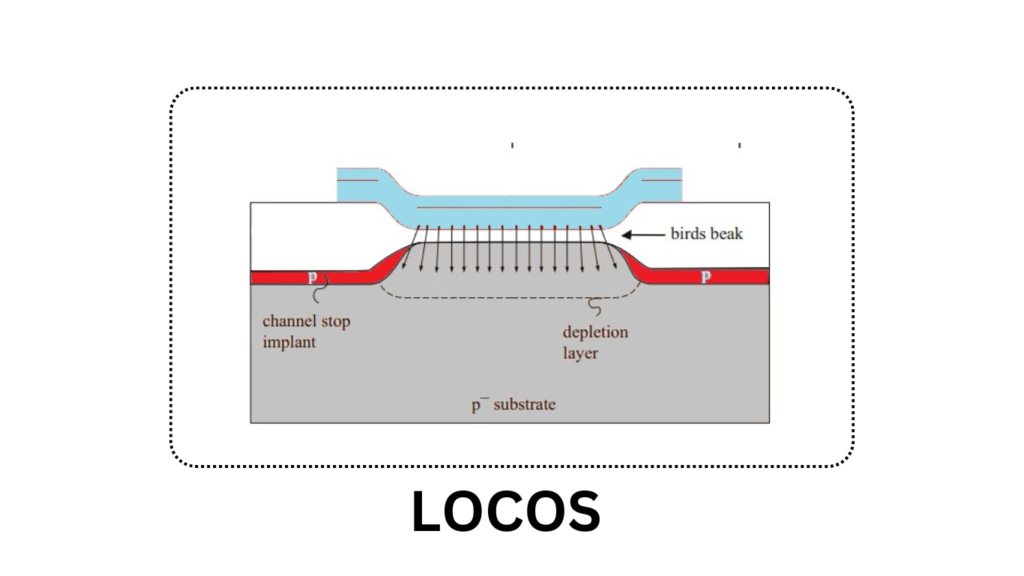The Narrow-Channel Effect refers to a phenomenon where the threshold voltage (VT) of a MOSFET increases as the width of the channel becomes smaller. This happens because, as the channel narrows, the depletion region underneath the gate extends under the gate’s edges, particularly where the gate crosses the field oxide. Essentially, you get an additional charge in the depletion layer that requires a higher gate voltage to compensate for, causing the threshold voltage to rise.

Now, if you look at how this happens, especially with a LOCOS (Local Oxidation of Silicon) isolation process, this effect is particularly evident. When the field isolation is done, there’s an encroachment of the channel stop dopants at the edges, causing a larger shift in the threshold voltage, especially with older, diffused well technologies. These dopants get implanted before the LOCOS oxidation process, and that leads to a bigger VT shift. However, if you’re working with a more modern process like a retrograde implanted well, the threshold voltage increase is less severe because the oxidation happens before the dopants are added.
What is Inverse Narrow-Width Effect (INWE) ?
You might also notice something called the Inverse Narrow-Width Effect (INWE) when the channel becomes very narrow, particularly around widths of 0.2 micrometers. What happens here is the threshold voltage actually decreases due to a stronger fringing field at the sharp corners of the shallow-trench isolation. This fringing field increases the electrical field strength, which lowers the threshold voltage. Another factor contributing to this drop in VT is the quality of the oxide used in filling the trench, as it’s not as good as the thermally grown field oxide used in older processes.
In the Narrow-Channel Effect, when the width of a transistor’s channel becomes smaller, the threshold voltage changes. I notice that this happens because the depletion region under the gate extends to the edges. As you reduce the width of the device, the threshold voltage increases. This is something we see often with older isolation methods, like LOCOS, where dopants near the edges make things worse.
However, with modern techniques like Shallow-Trench Isolation, you might experience the opposite effect at very narrow channel widths. We see a reduction in threshold voltage due to stronger electric fields at the edges.
Overall, the Narrow-Channel Effect is a critical aspect that needs to be considered in modern device design, especially as devices become smaller and more efficient. You see, this effect plays a role in the overall performance and efficiency of both nMOS and pMOS transistors across different process nodes.